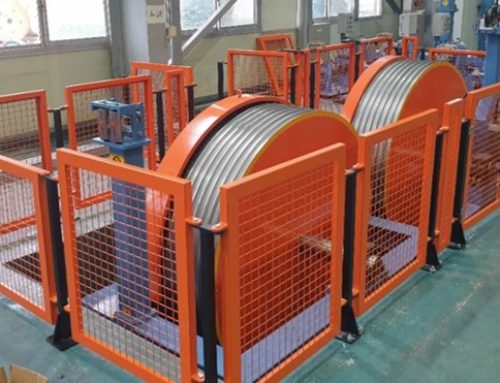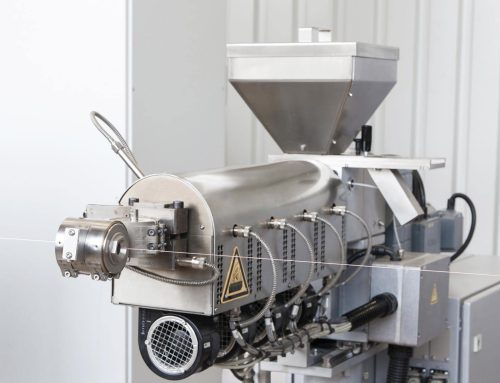Wire production is an intricate dance between art and science, merging traditional craftsmanship with cutting-edge technology. In our rapidly advancing world, the methods used to create wire have evolved dramatically, leveraging machinery and innovation to meet the growing demand across various industries. This article will explore the nuances of wire making machines, the processes involved in wire production, and the future of this essential industry.

This may interest you Understanding Insulation Lines: An In-depth Guide to Equipment and Processes
The Historical Context of Wire Production
Wire has been a fundamental element of human civilization for millennia. Wire production has a rich history from the earliest copper and gold wires used in jewelry to the modern steel wires that form the backbone of construction and electrical applications. Ancient civilizations developed rudimentary techniques to draw wire from metals, often using simple tools and manual labor.
With the onset of the Industrial Revolution, wire production underwent a seismic shift. The advent of steam-powered machines and later electric machinery revolutionized the efficiency and scale of wire production. Techniques such as wire drawing, annealing, and coating became more sophisticated, leading to the wide array of wire types we have today, including stainless steel, copper, aluminum, and specialty alloys.
Understanding Wire-Making Machines
Wire-making machines are sophisticated pieces of equipment designed to transform raw materials into finished wire products. These machines employ a series of processes that include:
- Wire Drawing: This is the primary process in wire production, where large diameter rods are pulled through a series of dies, gradually reducing their diameter while increasing their length. The tension applied during this process can significantly affect the wire’s final properties.
- Annealing: After drawing, the wire often becomes work-hardened and brittle. Annealing is a heat treatment process that softens the wire, allowing it to be further processed or utilized without breaking. This step is crucial in enhancing the ductility and flexibility of the wire.
- Coating: Depending on the application, wires may undergo various coating processes, such as galvanizing, to prevent corrosion, or insulating, to ensure electrical safety. Coating can significantly enhance the performance and lifespan of wire products.
- Spooling: Once the wire is drawn and treated, it is wound onto spools for easy transportation and handling. This step is essential for both logistics and manufacturing, as it prepares the wire for its end-use applications.
Types of Wire Making Machines
Wire making machines can be classified into several categories based on their function and technology:
- Single Wire Drawing Machines: These machines are designed for drawing a single strand of wire. They are commonly used in smaller-scale operations or for producing specialty wires.
- Multi-Wire Drawing Machines: These machines draw multiple strands of wire simultaneously, increasing production efficiency. They are ideal for high-volume production environments.
- Continuous Casting Machines: This type of machine is used to produce wire rods directly from molten metal, allowing for a more integrated production process.
- Coiling and Packaging Machines: These machines automate the spooling process and prepare wire products for shipping, ensuring consistent quality and efficiency.
The Science Behind Wire Production
Wire production is not just an art; it involves a deep understanding of material science and engineering principles. The properties of the raw materials used, such as their tensile strength, ductility, and conductivity, play a vital role in determining the characteristics of the final wire product.
Material Selection
The choice of material for wire production is critical. Common materials include:
- Copper: Known for its excellent conductivity and corrosion resistance, copper is often used in electrical applications. Copper wire is commonly used for wiring in homes, appliances, and electronics.
- Aluminum: Lighter than copper and resistant to corrosion, aluminum is an excellent choice for overhead power lines and automotive applications. It is also more cost-effective than copper.
- Stainless Steel: Known for its strength and corrosion resistance, stainless steel wire is used in applications ranging from medical devices to construction.
Mechanical Properties
Understanding the mechanical properties of the materials used in wire production is crucial. Key properties include:
- Tensile Strength: This measures how much pulling force a wire can withstand before breaking. It is essential for applications requiring durability and reliability.
- Ductility: This property describes how much a wire can be stretched without breaking. High ductility is vital for processes that involve bending or twisting the wire.
- Conductivity: For electrical applications, the conductivity of the wire material is paramount. Copper, for example, has a high conductivity rating, making it a preferred choice for electrical wiring.
Process Optimization
Modern wire production facilities utilize advanced technologies and processes to optimize efficiency and reduce waste. This includes:
- Real-Time Monitoring: Utilizing sensors and data analytics, manufacturers can monitor production processes in real-time, allowing for quick adjustments to maintain quality and efficiency.
- Automated Controls: Automation in wire drawing and processing can significantly reduce labor costs and minimize human error.
- Quality Control: Implementing rigorous quality control measures ensures that the final wire products meet industry standards and customer specifications.
The Art of Wire Production
While wire production is grounded in science, it also requires a level of artistry and craftsmanship. Skilled operators must understand the nuances of the machinery and the materials being used.
Craftsmanship and Skill
The human element in wire production cannot be overstated. Experienced operators possess the skills to troubleshoot issues, adjust machine settings, and ensure that each batch of wire meets the required specifications. This combination of technical knowledge and hands-on experience is crucial for producing high-quality wire products.
Design and Customization
Wire can be produced in various shapes, sizes, and coatings, allowing for a vast range of applications. The art of wire production lies in its ability to customize products to meet specific customer needs. This includes:
- Specialty Wires: Producing wire with unique properties for specific applications, such as high-temperature resistance or specific electrical characteristics.
- Design Flexibility: The ability to create wire products in different shapes and sizes, including flat wire, round wire, and multi-strand configurations.
- Coating Customization: Tailoring coatings to meet environmental and application-specific requirements, such as UV resistance or enhanced conductivity.

Innovations in Wire Production
As industries evolve, so too does the technology behind wire production. Recent innovations have focused on improving efficiency, sustainability, and product quality.
Advanced Materials
Research into advanced materials, such as composite wires and smart materials, is paving the way for future developments. These materials can provide enhanced performance and new functionalities in wire products.
Sustainable Practices
Sustainability is becoming increasingly important in wire production. Manufacturers are exploring eco-friendly materials, energy-efficient processes, and waste reduction strategies to minimize their environmental impact. For instance:
- Recycling Programs: Many wire manufacturers are implementing recycling programs for scrap wire, turning waste into valuable raw materials.
- Energy Efficiency: Advances in machinery and processes are leading to lower energy consumption, reducing both costs and environmental footprints.
Industry 4.0 and Automation
The integration of Industry 4.0 principles into wire production is revolutionizing the industry. Automation, robotics, and the Internet of Things (IoT) are being employed to enhance production capabilities. This includes:
- Predictive Maintenance: Utilizing data analytics to predict equipment failures before they occur, minimizing downtime and maintenance costs.
- Smart Manufacturing: Implementing interconnected systems that allow for seamless communication between machines, leading to improved efficiency and quality.
The Future of Wire Production
The future of wire production is bright, driven by advancements in technology and the growing demand for high-quality wire products across various industries. As manufacturers continue to innovate, we can expect to see:
- Increased Customization: The ability to produce customized wire products tailored to specific applications will become more prevalent, allowing manufacturers to cater to niche markets.
- Enhanced Automation: The ongoing integration of automation and smart technologies will streamline production processes, reducing costs and improving efficiency.
- Sustainability Initiatives: As environmental concerns rise, wire manufacturers will increasingly adopt sustainable practices, from material sourcing to production processes.
- Global Expansion: The demand for wire products is expected to grow globally, leading to the expansion of wire production facilities and supply chains across emerging markets.
Conclusion
The art and science of wire production is a fascinating blend of tradition and innovation. Wire making machines have transformed the industry, allowing for efficient production while maintaining high quality and customization. As we look to the future, the continued advancements in technology and a focus on sustainability will shape the next generation of wire products.
Whether it’s for electrical applications, construction, or specialized industries, the significance of wire production cannot be overstated. As we unlock the secrets of wire making machines, we continue to build the foundation of modern society, one wire at a time.



